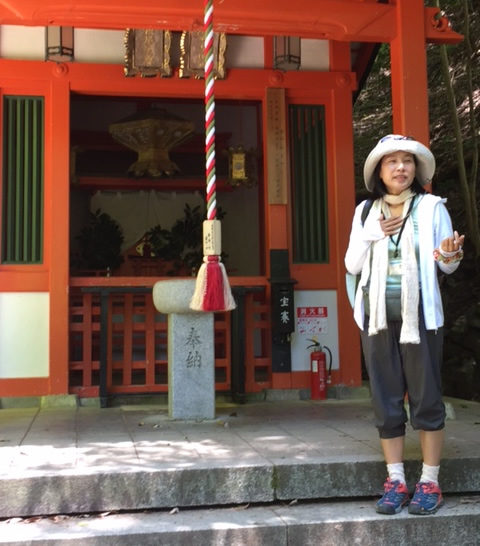
Exercising clear judgment, taking into account what is helpful versus harmful…
can help us avoid future suffering.
– Nicolai Bachman, The Path of the Yoga Sutras
When I opened the email and read its first few paragraphs, I was hooked – heart and mind. The email described a program called the Kripalu School of Mindful Outdoor Leadership.
This training – which combines forest bathing, yoga, Ayurveda, outdoor skills, and an overview of relevant research on nature’s health benefits…”
And it goes on to explain that the program is designed for those who are called to share nature’s gifts by integrating their love of the outdoors with mindfulness.
How perfect this would be for me, I thought. Isn’t this what I do in my yoga classes and meditations – use images from nature to help students connect to qualities that support them, or give them a sense of calm, or energy, or joy, or peace? The coolness of the full moon to calm them, or the movement of a stream to bring energy, or the light of the sun to encourage clarity, or the mountain for stability? Just the idea of sharing “nature’s gifts” excites me and brings joy.
I tried to convince my dear friend that the program would be perfect for us. We could become nature and mindfulness guides. I tried to convince my husband that he and I could do this program together, sharing the adventure of nine days of training in the Berkshires in late October, early November. After all, we have loved adventures in the past, like the month we spent in India studying at the Krishnamacharya Yoga Mandiram, and our time in Japan on a yoga retreat, as well as driving Route 50 wherever it went across the U.S.
He was cautiously interested. More cautious as he thought about spending 10 hours a day for nine days outside, which the program required. He was even more cautious as he looked up the temperature highs of 52 and lows of 32 at the time of the year the program is offered.
After my conversation with my husband, I sat quietly in contemplation. My intent was not to reflect on the program or anything in particular, but to be open to the wisdom of a source beyond myself. This kind of self-reflection or svadhyaya, one of the three components of kriya yoga, has kept me more than once from going down a road that wasn’t right for me.
So, as I sat, I came to realize that my enthusiasm for this program was not really training to be a nature guide. What I wanted was to spend time walking in a forest or on a hiking trail. To have more time to be outside. I wanted the peace I feel in nature.
I also reflected upon who I am and where I am in my life. As a yoga teacher and vedic chanter committed to sharing the teachings so generously given to me, why would I disrespect this wisdom, my years of study and experience to take up a different path. As a woman of sixty-nine, with a husband, children, grandchildren, relatives and friends I love, do I really want to commit my energy to this program? Would it bring me joy?
My mind can trick me into responding as if I am thirty-nine instead of my real age. In yoga, this is called asmita. Asmita is a misidentification with who we really are and is one of what Patangali, in the Yoga Sutra, calls the klesas. We are all subject to the klesas, and things generally do not go well for us when they are dictating our actions.
Rather than allowing this misidentification to lead me astray, I found checking in with my friend and my husband helped me to recognize that more reflection might be needed before signing up for this training. My reflection allowed me to have the discernment to see more clearly and choose more wisely what I was going to do. Lastly, after sharing my initial writing on this experience with my teacher, I realized how yoga’s teachings have guided this process of discernment and reassured me that what I am doing, and who I am, is truly enough.


